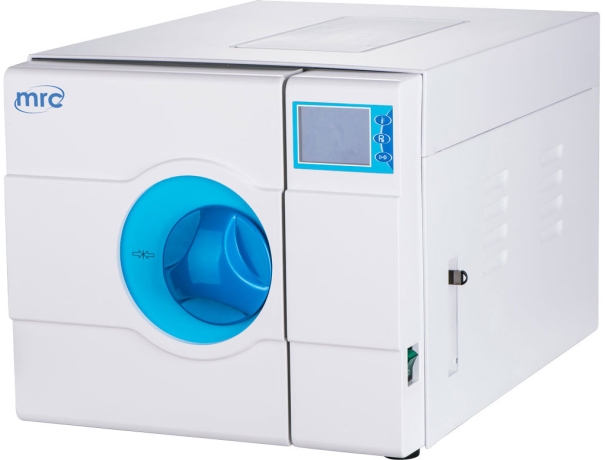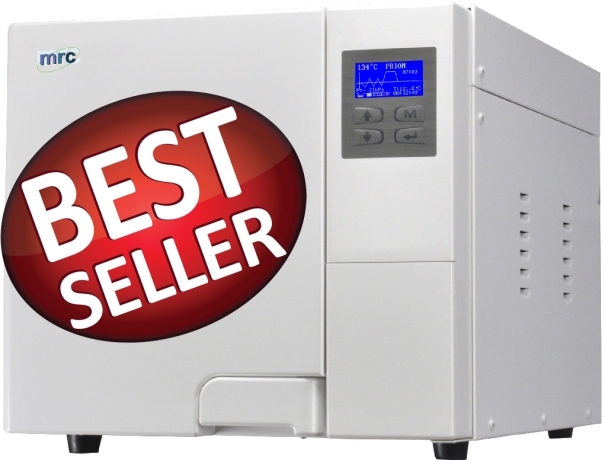Autoclaves Class B are advanced sterilization devices designed to meet the stringent sterilization requirements of modern healthcare facilities and laboratories. They utilize a combination of steam and pressure to achieve complete sterilization of instruments and materials.
Uses of Autoclaves Class B in Medical Settings
Sterilization of Surgical Instruments
Autoclaves Class B are important in sterilizing surgical instruments such as forceps, scalpels, and scissors. Ensuring the complete elimination of pathogens is vital to prevent infections during surgical procedures.
Sterilization of Dental Equipment
In dental practices, Class B are indispensable for sterilizing dental instruments, handpieces, and other equipment to maintain a safe and hygienic environment for patients and staff.
Applications in Laboratory Settings
Sterilization of Laboratory Glassware
Used in research laboratories to sterilize glassware, including beakers, flasks, and pipettes, ensuring contamination-free experiments and accurate results.
Sterilization of Culture Media
Maintaining sterile conditions is critical in microbiology and biotechnology laboratories. Autoclaves Class B effectively sterilize culture media, agar plates, and growth mediums, minimizing the risk of microbial contamination in experiments.
Autoclaves Class B in Veterinary Medicine
In veterinary clinics and animal research facilities, Class B are essential for sterilizing surgical instruments, animal cages, and laboratory equipment, safeguarding the health of animals and personnel.

Importance of Autoclaves Class B in Pharmaceutical Industry
In pharmaceutical manufacturing, Autoclaves Class B ensure the sterilization of production equipment, vials, and containers, maintaining the integrity and safety of pharmaceutical products.
Safety Features of Autoclaves Class B
Autoclaves Class B are equipped with advanced safety features such as automatic pressure and temperature monitoring, door interlocks, and safety valves to prevent accidents and ensure operator safety.
Maintenance and Care Guidelines
Proper maintenance and regular servicing are essential to ensure the optimal performance and longevity. Regular calibration, cleaning, and inspection help prevent breakdowns and ensure reliable sterilization cycles.
How to use autoclaves for dental tools
- Prepare the Autoclave: Make sure the machine is clean and in proper working condition. Check that the seals are intact, and the trays or racks inside are clean and free from any residue.
- Prepare the Dental Instruments: Before sterilization, clean the dental instruments thoroughly. Use an ultrasonic cleaner or manually scrub them with detergent and water to remove any debris, blood, or other contaminants.
- Load the Autoclave: Arrange the dental instruments in the autoclave trays or pouches, ensuring that there is adequate space between them for steam circulation. Avoid overcrowding, as it can prevent proper sterilization.
- Add Water: Fill the with distilled water according to the manufacturer's instructions. The water level should be sufficient to generate steam throughout the sterilization cycle.
- Set Parameters: Set the machine parameters based on the type of instruments being sterilized and the manufacturer's recommendations. Typically, dental instruments require sterilization at a temperature of around 121°C to 132°C (250°F to 270°F) for 15 to 30 minutes.
- Start the Cycle: Close the door securely and start the sterilization cycle according to the selected parameters. Some of them have pre-programmed cycles for different types of instruments, while others allow manual adjustment of time, temperature, and pressure.
- Monitor the Cycle: During the sterilization cycle, monitor the autoclave's indicators to ensure that the temperature and pressure are maintained within the required range. Most of them have gauges or digital displays that show the status of the cycle.
- Cooling Phase: After the sterilization cycle is complete, allow the autoclave to cool down before opening the door. Some have automatic cooling functions, while others may require manual cooling using built-in vents.
- Remove Sterilized Instruments: Once the autoclave has cooled down, carefully remove the sterilized dental instruments using sterile gloves or instruments. Place them in a clean, dry area or storage pouches until they are ready for use.
- Record Keeping: Maintain detailed records of each sterilization cycle, including the date, time, temperature, pressure, and batch of instruments sterilized. This documentation is essential for regulatory compliance and quality control.
- Routine Maintenance: Regularly inspect and maintain the autoclave to ensure proper functioning and safety. Follow the manufacturer's guidelines for cleaning, maintenance, and calibration.
How to use autoclaves in cosmetics
Autoclaves are commonly used in the cosmetics industry for sterilizing tools, equipment, and certain products to ensure they are free from harmful microorganisms. Here's how you can use effectively in the cosmetics industry:
- Preparation of Items: Before sterilization, ensure that the items to be sterilized are thoroughly cleaned and free from any visible debris. This step is crucial to ensure effective sterilization.
- Load the Autoclave: Place the cleaned and prepared items inside the autoclave chamber, making sure not to overcrowd it. Overcrowding can prevent proper steam circulation and hinder the sterilization process.
- Water Fill: Fill the machine with distilled water according to the manufacturer's instructions. The water serves as a medium to generate steam, which is the key agent for sterilization.
- Set Sterilization Parameters: Set the sterilization parameters on the autoclave control panel. This typically includes setting the temperature and pressure levels suitable for sterilizing cosmetic tools and equipment.
- Start the Sterilization Cycle: Once the parameters are set, start the sterilization cycle. The autoclave will heat the water to produce steam, which will penetrate the items inside the chamber, effectively killing bacteria, viruses, and other microorganisms.
- Monitor the Cycle: During the sterilization cycle, monitor the autoclave to ensure that it operates smoothly and maintains the set parameters. Most have built-in indicators or alarms to alert users of any issues during the cycle.
- Cooling Phase: Once the sterilization cycle is complete, allow the autoclave to enter the cooling phase. This phase helps to lower the temperature and pressure inside the chamber gradually.
- Safe Removal: After the cooling phase is complete, carefully open the autoclave door following the manufacturer's instructions. Use proper protective equipment, such as gloves, to handle sterilized items.
- Storage of Sterilized Items: Store the sterilized items in a clean and dry environment until they are ready for use. Proper storage helps to maintain their sterility until they are needed.
- Routine Maintenance: Regularly inspect and maintain the autoclave according to the manufacturer's guidelines. This includes cleaning the chamber, checking seals and gaskets, and ensuring proper functioning of all components.
